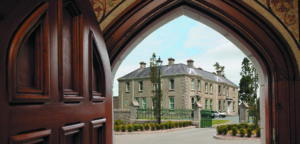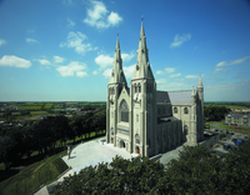MASS FOR ST. VINCENT DE PAUL SOCIETY
COLERAINE
SATURDAY SEPTEMBER 5TH, 1998
HOMILY BY MOST REVEREND SEÁN BRADY
ARCHBISHOP OF ARAMGH
Just over one year ago in August 1997, I was in Paris for the World Youth Day with the Holy Father, Pope John Paul II. It was an unforgettable experience. One million and fifty thousand young people gathered with the Pope to reflect on the words of Christ to his first disciples, ‘Come and see’. They had asked him the question: “Lord where do you live? Where do you hang out?” and in reply he had said: “Come and see”. We are told that they went and spent the whole day with him. Next day they were able to say to their friends, “We have found the Messiah”. It was the dream of every faithful Jew to find the Messiah.
One of the most memorable moments during that magnificent week, a week of great memories, was the beatification of Blessed Frederick Ozanam by Pope John Paul II in the Basilica of Notre Dame de Paris. I know that many of you were there. You had the privilege of sharing that great joy. It was a very happy occasion. I am sure it was a proud and happy day for Vincentians all over the world. We give God thanks today and praise for raising up people like Antoine Frederick Ozanam in his Church. It is a cause of great joy to know that someone whom you admire and esteem very much is now in the presence of God. Frederick Ozanam sees God face to face. The Church now allows him to be honoured with public cult under the title of ‘Blessed’. That is what beatification means. He is called ‘Blessed’ and Mass can be offered in his honour.
At that ceremony there in Paris on that day in that magnificently full Cathedral was a positive declaration that Frederick Ozanam did in fact practice heroic virtues. He was a holy and good man to a heroic degree. He worked an authentic miracle in answer to prayer. The fact that he practiced virtue to such a heroic degree caused the people to ask: “Well how did he practice that virtue?”
Because we all want to see God face to face, because we all want to win Heaven. People went back once again to study the facts of his life. They remembered that at the age of sixteen he suffered a crisis of doubt as regards his faith. He overcame that crisis with the help of his teacher, Abbe Noiro. There are many sixteen year olds today suffering a similar crisis of doubt and crisis of faith. They need teachers like Abbe Noiro to show them the light, to lead them out of their darkness, to come to their rescue. They need help in building up the foundations of their faith. We all need to imitate the patience and the charity of Blessed Frederick Ozanam in our discussions and in our debates with those who have problems or difficulties in believing.
In 1831, at the age of eighteen, Frederick Ozanam went to Paris to study Law. In that same year he published his first work which was written to refute the theories of some enemies of the Church. He was always concerned to refute the attacks on Catholicism which were widespread in the University. Two years later he, and a few fellow student, formed a Conference of Charity to undertake practical work amongst the poor. As you know this is accepted as the foundation date of your Society. Frederick Ozanam was twenty years of age.
We all know that there is a breakdown in communication between a lot of modern people and the teaching of the Church today. We have to try and overcome that breakdown in communication. Some of the terms we use like ‘Redemption’ and ‘Salvation’ do not mean much to people today.
Cardinal Ratzinger was once asked: “How can we overcome this problem?” His answer was: “Yes, we should be devoting our efforts to dealing with these difficulties” and then he said an interesting thing: “However, that can succeed only if we ourselves live these things interiorly. When they become comprehensible again in new ways by being lived, they can also be stated in new ways”. He said: “The communication of Christian realities involves the whole person and one can only grasp that when one enters into the pilgrim community”. He says there are two requirements: “Really to live the reality and so come to understand it oneself and then to create new possibilities of expression to a community that ratifies it”.
The reason I bring this up at all is that I believe that you, members of Vincentians, you members of the St. Vincent de Paul Society, do indeed live these things interiorly.



You must be logged in to post a comment.